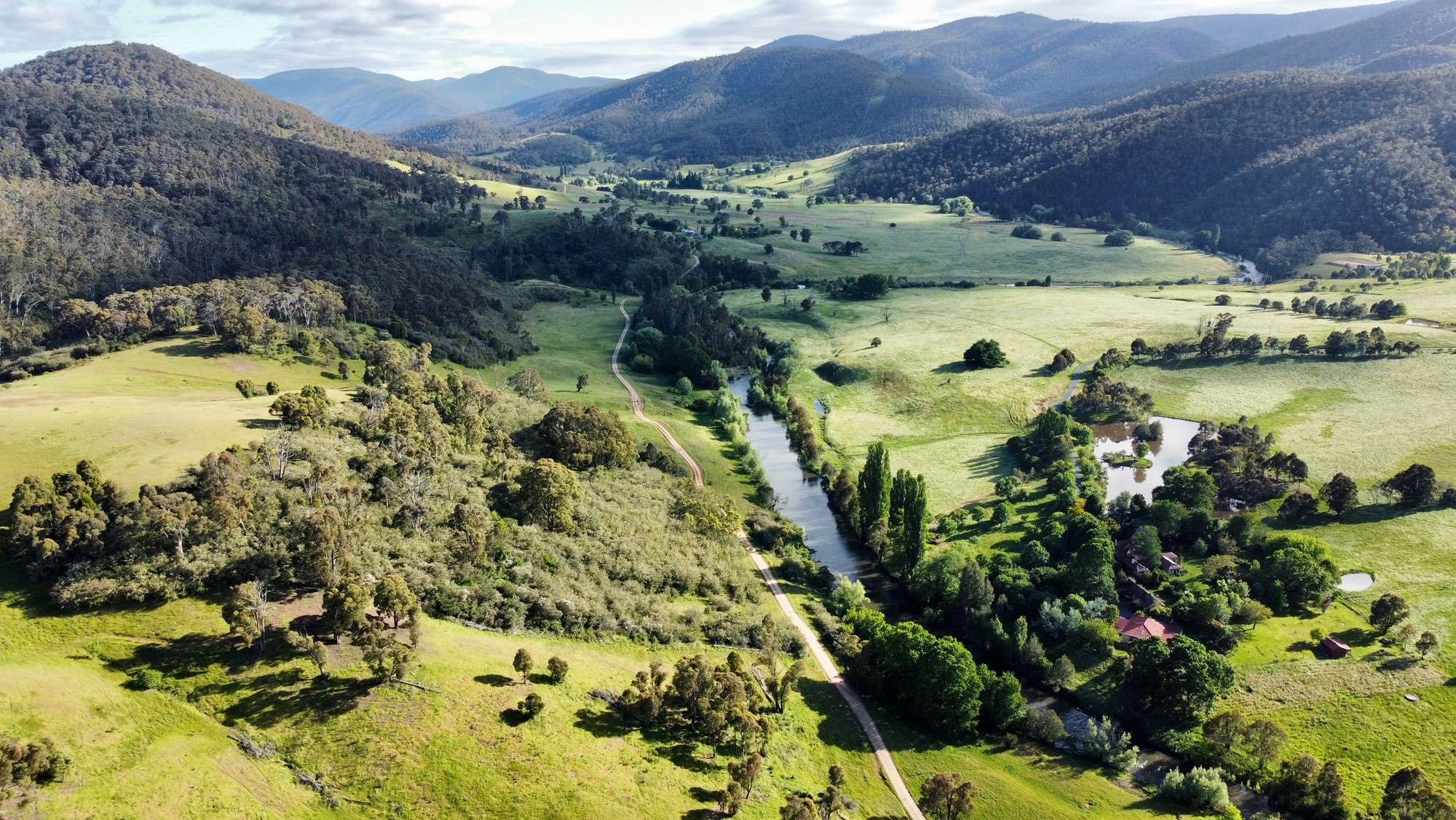Information about Brindabella Station:
Location
Brindabella Station is located in the Brindabella Valley in the southern tablelands of south eastern NSW (roughly in the middle of a triangle formed by Canberra, Cooma and Tumut). The Station is approximately 3km south of the "T" junction formed by the Canberra to Brindabella Road and the Brindabella Valley Road on the Canberra side of the Goodradigbee River.
The Brindabella Valley sits at an altittude of 620-700m and is surrounded by mountains ranging over 1,300m. There are approximately 8 kilometres of semi-cleared valley floor predominantly stocked with cattle, horses and sheep. The Goodradigbee River rises at Mt Morgan on the high plains within the Kosciuszko National Park, and flows through the Valley before re-entering rough country joining the Murrumbidgee River at Wee Jasper and flowing into the Burrinjuck Dam.
Three National Parks surround Brindabella Station:
- Kosciuszko National Park (6,900 sq kms)
- Namadgi National Park (1,061 sq kms)
- Brindabella National Park (184.5 sq kms)
Brindabella Station remains a working property and provides guests an opportunity to see farming activities during their stay. Additionally, it is possible to visit the Homestead's extensive gardens by prior arrangement.
Climate
Summer daytime temperatures are generally in the mid to high 20s (°C). In winter mean daytime temperatures range between 12-14°C with nights dipping to 0°C or below with frequent frosts. The Valley is protected from most winds with only the occasional occurrence of fog. Whilst it seldom snows in the valley, the tops of the ranges are generally snow covered for a number of months during late-autumn and winter. Peak rain periods occur from November through to March while April through to July are generally drier months.
Road Conditions
Only two roads exist to Brindabella Valley one from Canberra (60km) and the other from Tumut (60km). Both roads are partially sealed with the last 20km into the Valley from both directions being gravel. The road conditions vary based on the weather and level of maitnenance but are generally navigable by 2-wheel drive vehicels. Only in exceptional circumstances with heavy mid-winter snow on the mountains is a 4-wheel drive vehicle required to get to the Valley.

